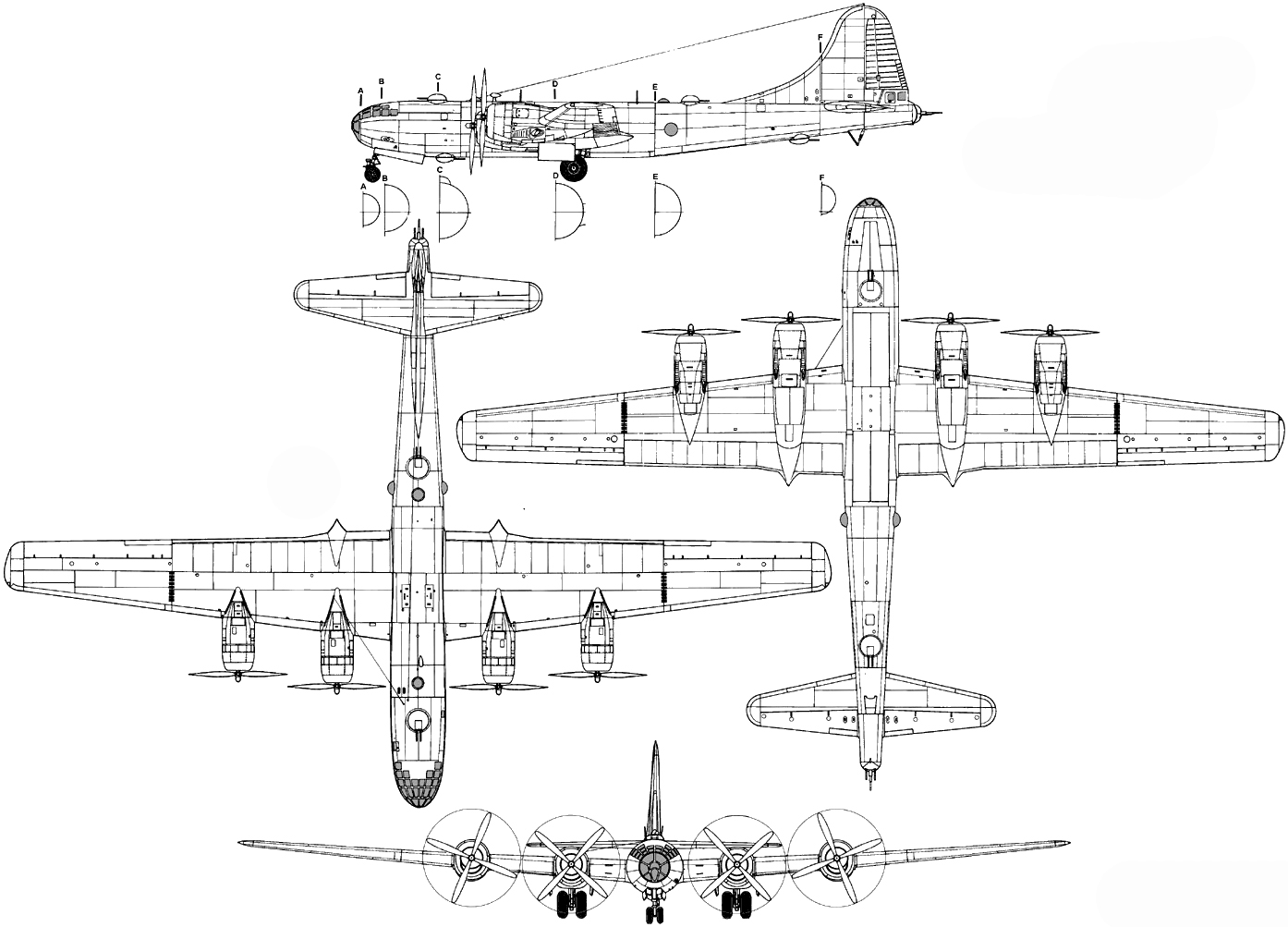Though late to the war effort, the B-29 Superfortress was the pinnacle of allied bomber engineering, with a pressurized cabin and an analog, computer-controlled, fire-control system.
Designed in 1940 as the replacement for the B-17 and B-24, the first B-29 flew in 1942. The following year, United States Army Air Forces leadership committed the Superfortress to Asia, where its extensive range made it well-suited for the long, over-water flights against the Japanese homeland from bases in China. During the last two months of 1944, B-29s began operating against Japan from the islands of Saipan, Guam and Tinian. This airframe would later be used in the Korean War. However, it was two days in August 1945, that made the B-29 one of the most well-known aircraft in history. The B-29s, “Enola Gay” and “Bockscar,” assigned to the 509th Composite Group, dropped the world’s first, two atomic bombs on Hiroshima and Nagasaki, Japan, ending World War II.

Serial Number: 44-86408
Manufacturer: Boeing
Crew: Nine to fourteen
Engines: Four Wright R-3350-23 radial; 2,200 horsepower each
Wingspan: 141 feet 3 inches
Length: 99 feet
Height: 27 feet 9 inches
Weight: 70,140 pounds (empty); 135,000 pounds (maximum)
Speed: 220 mph (cruising); 365 mph (maximum)
Range: 5,830 miles
Service Ceiling: 32,000 feet
Armament: Twelve .50-caliber machine guns; up to 20,000 pounds of bombs
Cost: $605,360 (average B-29 cost of unit in 1944)
Hill Air Force Base played a critical role in repairing, maintaining, storing and refurbishing B-29s after World War II. During the war, Hill Air Force Base also supported Wendover Field, Utah, where the renowned 509th Composite Group trained with its Silverplate B-29s. After the war, Hill Air Force Base stored these airframes in large numbers and would later go on to modify some for the Korean conflict.
Now located at Hill Aerospace Museum, in June 1948, our B-29 moved to the 97th Bombardment Group, Strategic Air Command, at Biggs Air Force Base, Texas. One year later it transferred to the 4002nd Base Services Squadron, Strategic Air Command (SAC), at Campbell Field, Kentucky. In October 1949, the B-29 then moved to the 43rd Bombardment Group (SAC) at Davis-Monthan Air Force Base, Arizona.
The aircraft encountered several more transfers; in May 1953, it was transferred to the Wright Development Center, Wright-Patterson Air Force Base, where it remained until June 1953.
Following time at Wright-Patterson, the aircraft was relocated to Dugway Proving Grounds, Utah, for chemical munitions testing. In November 1953, the aircraft was dropped from the United States Air Force inventory while serving at Michaels Army Air Field, Dugway Proving Grounds. For the next 30 years, the aircraft would reside at Dugway, acting as a ground test vehicle for testing various types of chemical warfare agents.
In 1983, museum staff transferred B-29 #44-86408 from Dugway Proving Ground to Hill Aerospace Museum, where it underwent restoration and still resides today. Currently, the B-29 is painted to depict the B-29 “Straight Flush” assigned to the 509th Composite Group, one of 531 B-29s manufactured by the Glen L. Martin Company in Omaha, Nebraska. On August 6, 1945, Captain Claude Eatherly flew reconnaissance in “Straight Flush” over Japan and determined the weather was clear for the “Enola Gay” to drop the bomb on Hiroshima.
Though late to the war effort, the B-29 Superfortress was the pinnacle of allied bomber engineering, with a pressurized cabin and an analog, computer-controlled, fire-control system.
Due to the B-29’s immense size, at over 141′ wide, the Superfortress was assembled in four separate facilities; two plants in Renton, Washington; one in Wichita, Kansas; and another in Marietta, Georgia.
The B-29 was able to travel up to 3,250 miles at an altitude of nearly 32,000 feet.
Although exact numbers are unclear, approximately 10% of the bombing force brought to bear against the Japanese mainland were shot down by enemy forces. Whether this was due to anti-aircraft (AA) fire or enemy fighters is not known.
The B-29 was nicknamed the Superfortress, in homage to the B-17 Flying Fortress.
The B-29 was a high-altitude strategic bomber, built specifically to handle the challenges of the war on the Pacific front. Bombers would be required to fly extreme (3,000+ miles) distances at high altitudes in order to meet the enemy and return home safely.
Simply put, the B-29 wasn’t needed. The B-17 Flying Fortress was already handling the job nicely, and the war in Europe was, by that point, in its final stages.